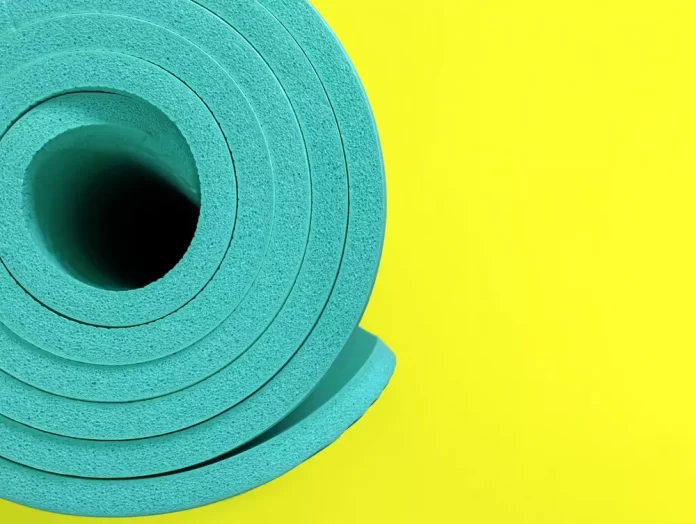
Whether you’re an avid yogi or a regular fitness enthusiast, workout mats provide padding and cushioning for your joints and muscles during exercises. But are yoga mats and exercise mats the same, or are there fundamental differences you should know about?
Prepare to unroll the mat of knowledge and embark on a captivating exploration of yoga mats versus exercise mats.
What is a mat, and why do we need it?
In the context of yoga and exercise, a mat is a specialized piece of equipment designed to provide a supportive and comfortable surface for these activities. It is typically made of materials like PVC, rubber, or foam and comes in various sizes and thicknesses to suit different needs.
Cushioning and Joint Protection
Mats provide a layer of cushioning between your body and the hard floor, reducing the impact on your joints during movements. This can help prevent discomfort and potential injuries, especially during high-impact exercises.
Stability and Balance
Yoga and exercise mats often have textured or non-slip surfaces that enhance grip and prevent slippage. This helps you maintain stability, balance, and proper alignment in poses and movements, reducing the risk of falls or missteps.
Hygiene and Cleanliness
Mats create a barrier between your body and the floor, protecting you from dirt, sweat, and potential allergens. They are typically easy to clean and maintain, promoting a hygienic environment for your practice.
Defined Personal Space
Using a mat establishes a designated area for your practice, creating personal space even in a crowded gym or studio. This psychological boundary can help you focus and concentrate better, enhancing the effectiveness of your workouts or yoga sessions.
Portability and Convenience
Yoga and exercise mats are lightweight and portable, making them easy to carry to different locations. You can roll them up or use carrying straps for convenient transportation. This allows you to maintain your fitness routine at home, in a gym, or traveling.
Also read about: Can We Drink Lemon Water Before Yoga? Benefits, FAQs, and Precautions
Are yoga mats and exercise mats the same
Let’s dig deeper into the similarities and differences between these two types of workout mats to help you decide which is best for your needs.
Construction and Materials
Yoga and exercise mats are constructed in similar ways using various materials, including:
- PVC (Polyvinyl Chloride): This synthetic material is the most common for yoga and exercise mats due to its affordability. PVC mats tend to be thin and can feel slippery, though some options add texture to improve grip.
- Rubber: Rubber mats are thicker and provide more cushioning and support than PVC mats. However, they tend to be heavier and more expensive.
- EVA (Ethylene Vinyl Acetate): This closed-cell foam is a popular eco-friendly option, providing cushioning and grip without the toxicity of PVC. EVA yoga mats tend to be thicker and softer.
- Cork: Cork mats provide natural sustainability, durability, and cushioning. They are often the priciest option.
- Cotton/Jute: Made from plant fibers, genuine mats offer breathability but not as much cushioning. They are best for restorative yoga.
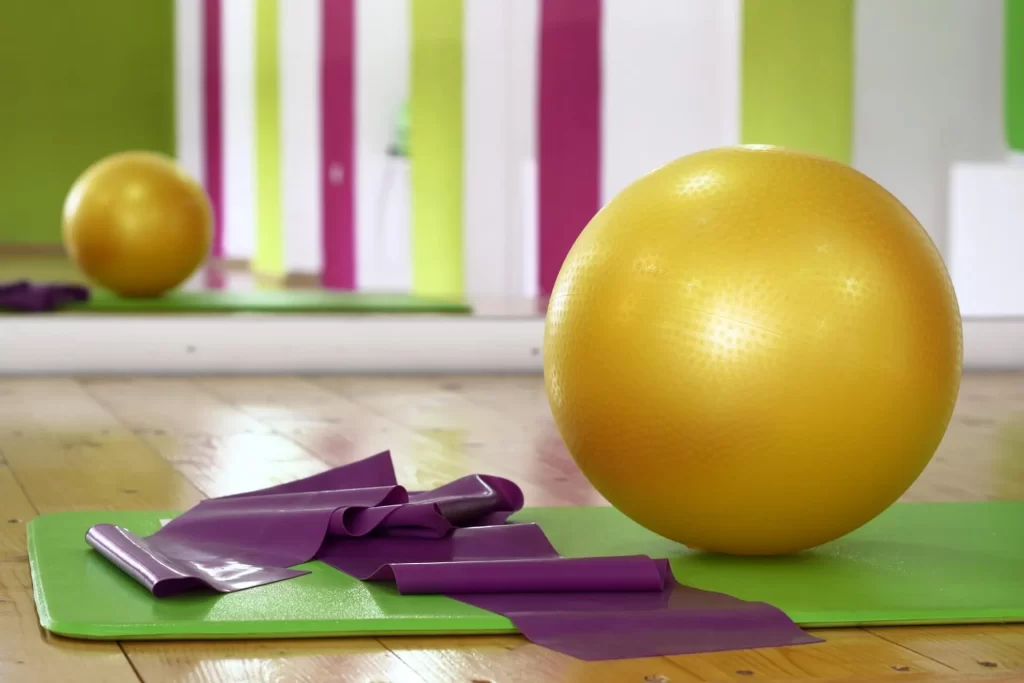
Textures and Grips
Yoga mats and exercise mats often have different textures and grips to cater to the specific needs of practitioners. Here are some common variations:
Yoga Mats
Smooth Texture
Many yoga mats have a smooth texture, allowing easy movement and transitions between poses. This texture provides a non-abrasive surface that feels comfortable against the skin.
Sticky Grip
Yoga mats often feature a sticky surface that provides a good grip, helping to prevent slippage during yoga poses. This is especially important when practicing more dynamic or challenging postures.
Alignment Markers
Some yoga mats have alignment markers or lines printed on the surface. These markers help practitioners maintain proper alignment and form during their yoga practice.
Exercise Mats
Ribbed or Wavy Texture
Exercise mats may have ribbed or wavy textures on the surface. These textures offer enhanced grip and traction, which can be beneficial during exercises that involve movement or require stability.
Cushioned Padding
Many exercise mats have additional cushioning or padding to provide extra comfort and support during exercises that involve lying down or putting weight on sensitive areas, such as the spine or joints.
Non-Slip Surface
Exercise mats often feature a non-slip surface that helps maintain stability and prevent sliding, even during vigorous or high-impact exercises.
Moisture Wicking Properties
Some exercise mats are designed with moisture-wicking properties to absorb sweat and keep the surface dry, contributing to a better grip and preventing slipping.
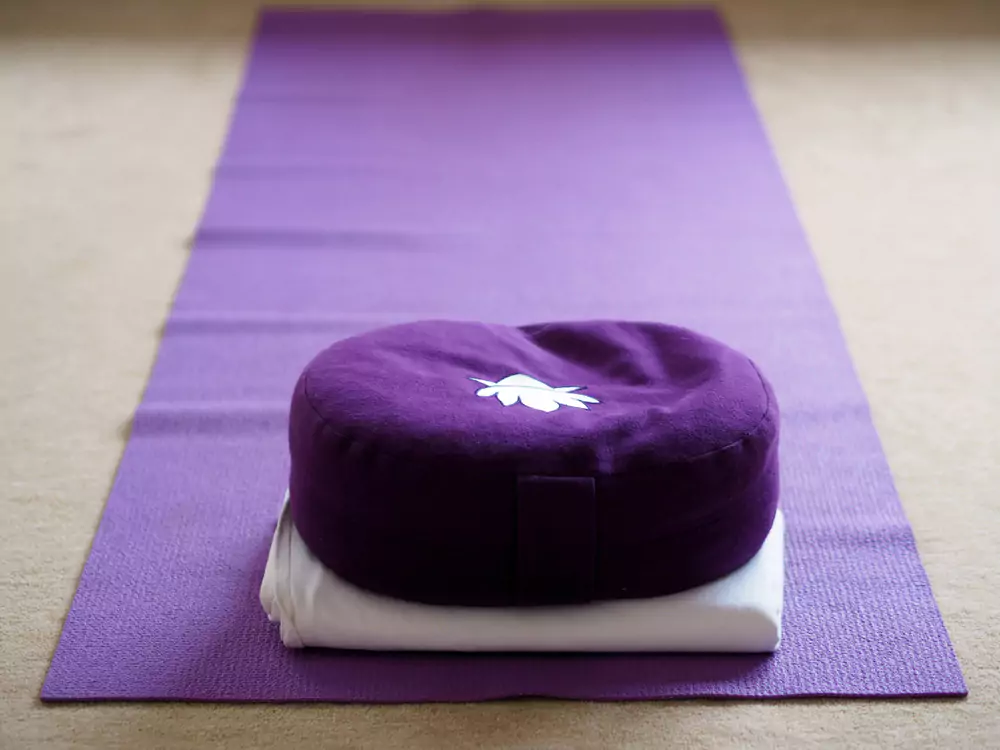
Size and Shape
Yoga mats tend to be between 68 and 84 inches long to accommodate taller people in yoga poses. Exercise mats skew more toward 60 to 72 inches, fitting standard bench and weight equipment widths.
Yoga mats and exercise mats come in various sizes and shapes to accommodate different preferences and types of activities. Here are some standard options:
Yoga Mats
Standard Size
The standard size for a yoga mat is around 68 inches (173 cm) long and 24 inches (61 cm) wide. This size suits most practitioners and provides ample space for yoga poses and movements.
Extra Long
Some yoga mats are available in extra-long sizes, typically around 72 inches (183 cm) or longer. These mats are designed for taller individuals who may require more length to perform their yoga practice comfortably.
Narrow Width
While the standard width of a yoga mat is 24 inches (61 cm), there are also narrower options available, typically around 18 inches (46 cm). These thinner mats can be helpful for practitioners who prefer a more compact or lightweight option.
Also read about: Are Yoga Mats Made Of Latex?
Exercise Mats
Standard Size
Exercise mats often come in a standard size of around 72 inches (183 cm) long and 24 inches (61 cm) wide. This site provides sufficient space for various exercises, including stretching, bodyweight exercises, and core workouts.
Extra Large
Some exercise mats are more extensive, offering more surface area for exercises that require a wide range of movements or more extended positions. These mats benefit individuals who prefer a larger size to work on or for group exercise settings.
Folding or Roll-Up Options
In addition to the traditional flat rectangular shape, exercise mats may come in folding or roll-up designs. These mats can be folded or rolled for easy storage and transportation, making them convenient for individuals who are frequently on the go or have limited storage space.
It’s essential to consider the size and shape of a mat based on your height, the type of exercises or yoga you practice, and your personal preferences. Trying out different sizes and shapes can help you find the mat that offers space and support for your needs.

Durability
Yoga Mats
Yoga mats are typically designed to withstand regular use and provide long-term durability. The durability can vary depending on the materials’ quality and the mat’s construction. High-quality yoga mats made from durable materials like PVC or natural rubber tend to be more resilient and long-lasting. However, it’s important to note that with regular use, all mats will experience wear and tear, and their lifespan may vary based on factors such as frequency of use, intensity of practice, and maintenance.
Exercise Mats
Exercise mats, similar to yoga mats, are designed to be durable for various types of exercises and fitness activities. The durability can depend on the materials used, such as foam or rubber, as well as the overall construction of the mat. Thicker exercise mats with higher-density foam or rubber layers offer better durability and resilience against compression and impact. However, like yoga mats, the lifespan of an exercise mat can be influenced by factors such as frequency and intensity of use.

Thickness
Yoga Mats
Yoga mats come in different thicknesses to suit individual preferences and needs. The standard thickness ranges from around 1/8 inch (3 mm) to 1/4 inch (6 mm), balancing cushioning and stability.
Thicker yoga mats, around 1/4 inch (6 mm) or more, provide extra cushioning and support for sensitive joints but may sacrifice some stability. Thinner mats, around 1/8 inch (3 mm) or less, offer a more stable surface but may provide less cushioning for certain poses.
Exercise Mats
Exercise mats can vary in thickness depending on the intended use and the level of cushioning required. Thicker exercise mats, typically ranging from 1/4 inch (6 mm) to 1/2 inch (12 mm) or more, provide more cushioning and support for exercises that involve lying down or putting weight on the mat.
Thinner exercise mats, around 1/8 inch (3 mm) to 1/4 inch (6 mm), are often used for activities that require a more stable surface, such as high-impact exercises or balance training.
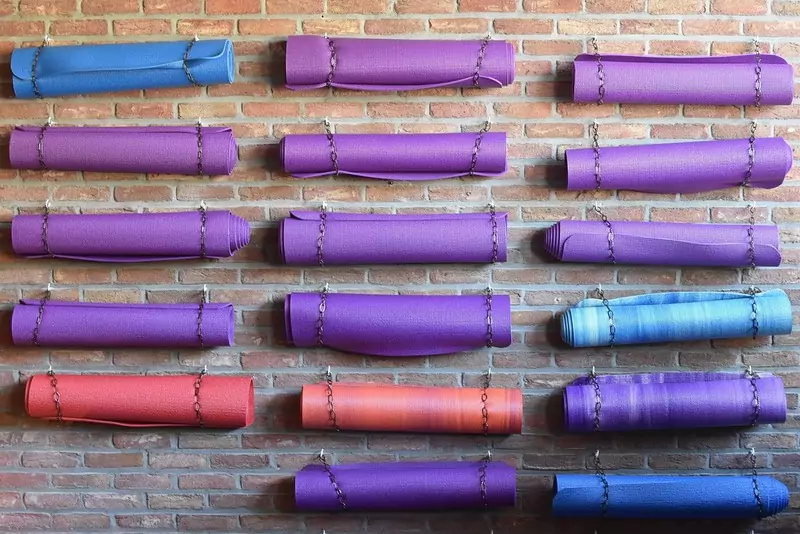
When do you choose an exercise mat?
An exercise mat is a versatile piece of equipment that can be used for various types of exercises and fitness activities. Here are some situations where choosing an exercise mat may be beneficial:
Floor-Based Exercises
If you regularly engage in floor-based exercises like Pilates, stretching, or core workouts, an exercise mat can provide cushioning and support for your body. It creates a comfortable surface that helps reduce discomfort and potential strain on your joints, allowing you to perform exercises with greater ease and safety.
Bodyweight Exercises
An exercise mat can offer a non-slip surface and added stability for bodyweight exercises involving push-ups, planks, or lunges. It helps prevent your hands or feet from sliding, enabling you to maintain proper form and focus on the targeted muscles.
High Impact Exercises
If your fitness routine includes high-impact exercises like jumping jacks, burpees, or plyometric exercises, an exercise mat with sufficient thickness can help absorb shock and reduce the impact on your joints. It provides a softer landing surface, minimizing the risk of discomfort or potential injuries.
Home Workouts
An exercise mat becomes particularly useful if you prefer working out at home. It creates a designated space for your fitness activities, protecting your floors and providing a comfortable surface for exercise. Additionally, exercise mats are often portable and easy to store, making them convenient for home use.
Studio or Gym Classes
If you attend group fitness classes or use a shared exercise space, having your exercise mat ensures personal hygiene and provides a familiar surface for your workouts. It offers comfort and cleanliness, particularly in environments where multiple individuals share mats.
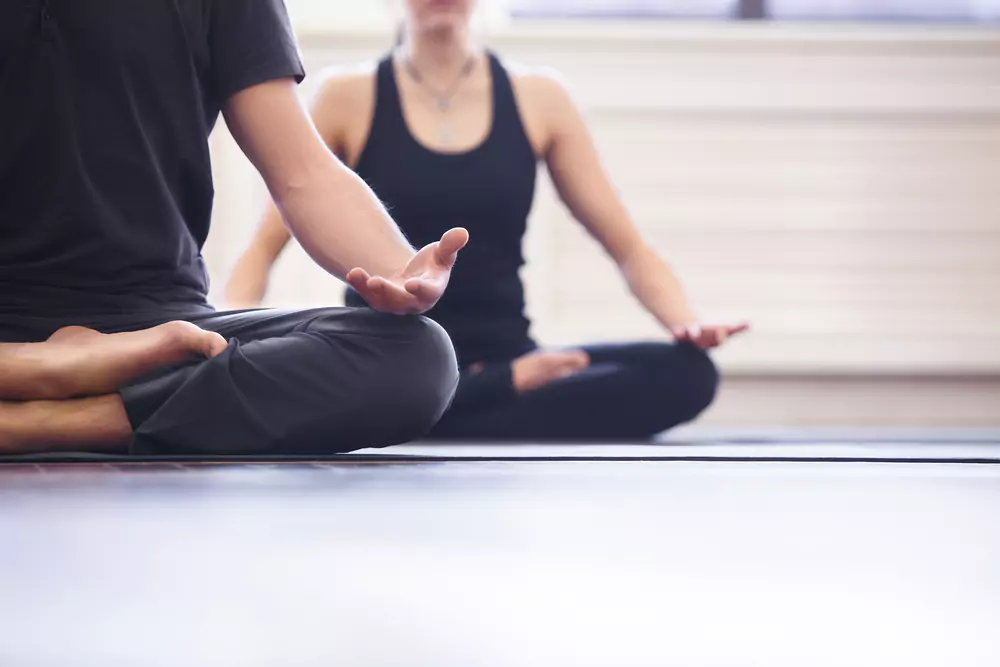
When to choose a yoga mat?
A yoga mat is specifically designed for practicing yoga, but it can also be used for other low-impact exercises or activities that benefit from a firm and stable surface. Here are some situations where choosing a yoga mat would be appropriate:
Yoga Practice
If you regularly engage in yoga, a yoga mat is essential. It provides a dedicated space for your practice and offers the necessary grip and stability to perform various yoga poses. Yoga mats enhance your connection with the ground, allowing you to maintain balance, alignment, and proper form during your yoga practice.
Meditation and Mindfulness
Yoga mats can be used for meditation and mindfulness practices. The mat creates a comfortable and defined space for sitting or lying down, supporting your body and providing a clean surface. The grip and cushioning of a yoga mat can contribute to a more focused and relaxed meditation experience.

Stretching and Gentle Exercise
Yoga mats are suitable for gentle stretching exercises that involve sitting, lying down, or light movements. The mat’s texture and cushioning offer comfort and support during these activities, making it easier to maintain proper alignment and engage in gentle exercises.
Pilates and Barre Workouts
Although Pilates and barre workouts often use specialized equipment, a yoga mat can still be helpful for floor-based exercises in these disciplines. It provides a non-slip surface, cushioning, and stability for various movements and can help protect your body from hard or cold floors.
Portability
Yoga mats are lightweight and portable, making them convenient for traveling or practicing yoga outside. Whether going to a yoga class, retreat or practicing in nature, a yoga mat can be easily rolled up and carried with you.
Also read about: How To Sit On A Meditation Cushion? Tips & Advice
FAQs
Conclusion
In conclusion, while yoga and exercise mats serve similar purposes by providing cushioning and support during fitness activities, there are some notable differences between the two.
Yoga mats are designed for yoga practice, offering grip and stability for various poses. They tend to be thinner and lighter, focusing on connecting to the ground.
On the other hand, exercise mats are more versatile and cater to a broader range of exercises beyond yoga. They may offer greater thickness and density to absorb impact for high-impact activities.
However, there can be an overlap between the two, and yoga mats can be used for exercises, especially low-impact ones, while exercise mats can be used for yoga. Ultimately, the choice between a yoga mat and an exercise mat depends on individual preferences, the specific type of exercise, and the level of cushioning and support desired.

